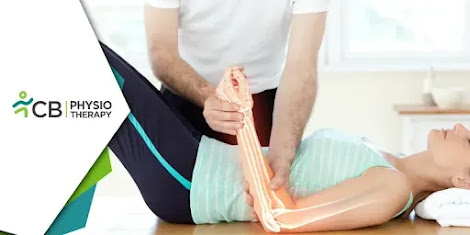In our quest for peak performance in sports or daily tasks, our bodies often endure repeated movements, which can result in overuse injuries in our arms and shoulders. Fortunately, there are solutions available. Physiotherapy stands out as a promising option, providing customized prevention plans to help strengthen and protect against these common injuries. Let’s explore the effectiveness of these programs and how they can transform the way you approach your physical health.
Understanding Overuse Injuries
Before we explore prevention strategies, it’s crucial to understand the anatomy of overuse injuries. From tennis elbow to rotator cuff strains, these afflictions develop gradually, stemming from repetitive stressors, improper technique, or insufficient recovery periods. The upper extremities, encompassing shoulders, elbows, wrists, and hands, are particularly susceptible due to their involvement in myriad activities, from sports to occupational tasks.
Advantage of Physiotherapy: How It Works
Physiotherapy programs for upper extremity injury prevention operate on a multifaceted approach, addressing biomechanical imbalances, enhancing strength and flexibility, and promoting proper technique. Let’s dissect each component:
1: Assessment and Screening
The journey begins with a comprehensive assessment, where skilled physiotherapists evaluate movement patterns, joint mobility, and muscular imbalances. Through functional tests and range of motion assessments, they pinpoint areas of vulnerability, laying the groundwork for personalized interventions.
2: Education and Awareness
Knowledge is power, and in the realm of injury prevention, awareness is paramount. Physiotherapists educate individuals on ergonomic principles, body mechanics, and warning signs of impending injury. Armed with this knowledge, clients learn to modify behaviours and adopt strategies that minimize strain on their upper extremities.
3: Strength and Conditioning
Building a resilient musculoskeletal system forms the cornerstone of injury prevention. Physiotherapy programs incorporate targeted strength and conditioning exercises to bolster the muscles surrounding the shoulders, elbows, wrists, and hands. From resistance training to proprioceptive drills, these exercises enhance stability and mitigate the risk of overuse injuries.
4: Flexibility and Mobility
Maintaining optimal joint mobility and tissue flexibility is instrumental in injury prevention. Through tailored stretching routines and mobility exercises, physiotherapists alleviate muscular tension, correct imbalances, and restore proper movement patterns. Enhanced flexibility not only reduces the likelihood of injury but also improves overall performance.
5: Technique Modification
Often, subtle adjustments in technique can make a world of difference in injury prevention. Physiotherapists analyze movement mechanics, offering guidance on proper posture, grip, and stroke technique. Whether on the tennis court or in the office, refining these nuances minimizes stress on vulnerable structures, promoting longevity and performance.
6: Recovery and Regeneration
Rest and recovery are the unsung heroes of injury prevention. Physiotherapy programs emphasize the importance of adequate downtime, coupled with targeted recovery strategies. From ice therapy to soft tissue mobilization, these modalities facilitate tissue repair, reduce inflammation, and expedite recovery between training sessions or work shifts.
Evidence Speaks: Efficacy of Physiotherapy Programs
The effectiveness of physiotherapy in preventing upper extremity overuse injuries is not merely anecdotal; it’s supported by a robust body of evidence. Research studies and clinical trials consistently demonstrate the efficacy of targeted interventions in reducing injury rates and optimizing performance.
Real-World Applications: From Athletes to Office Warriors Beyond the realm of academia, the impact of physiotherapy programs reverberates across diverse spheres. Professional athletes rely on physiotherapists to fine-tune their bodies, optimizing performance while minimizing injury risk. Similarly, forward-thinking companies invest in employee well-being, offering onsite physiotherapy services and ergonomic assessments to safeguard against work-related musculoskeletal disorders.
A Path to Optimal Health and Performance The effectiveness of physiotherapy programs in preventing upper extremity overuse injuries is undeniable. By addressing biomechanical imbalances, promoting proper technique, and implementing targeted exercise and recovery protocols, physiotherapists empower individuals to unlock their full potential, both on and off the field.
As awareness grows and evidence accumulates, integrating physiotherapy into injury prevention strategies will become not just advisable but imperative. Embrace the power of physiotherapy, and embark on a journey towards optimal health, longevity, and peak performance. Your upper extremities will thank you for it.

